100 Jahre Bauhaus
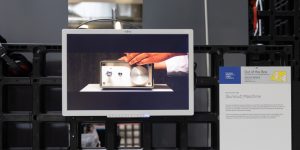
[burnout] Maschine
Max Kullmann (DE)
The [burnout] Maschine was designed to prevent individuals (who are part of an increasingly stressed society despite diminishing physical work) from burning out by taking on this exclusively human inadequacy. At the same time, the relationship between man and machine is questioned.
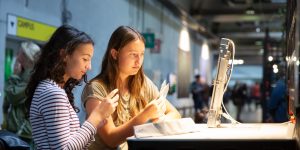
Privacy Machine
Timm Burkhardt (DE)
An electronic way to say, “I want to be private today and not appear in your social media photos.” Privacy Machine is a working proof of concept: stand in front of the screen and take the badge or the scarf. Both have a special pattern on it. As long as this pattern is recognized by the camera, the software will pixelate your face. It‘s an unrealistic wish because manufacturers would have to integrate this software into their smartphones as a default.
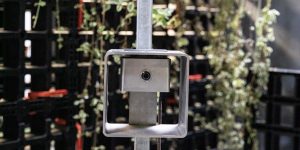
Machine to Support the Starving Artist
Timm Burkhardt (DE)
This work is designed to undermine the vital but patronizing “Harz IV” agenda of the German government in which self-employed individuals must send in records of their expenses in order to verify the necessity of support. Made of stainless steel, this unobtrusive machine is suited for the harsh environments of the streets. It generates receipts for random items, quantities, and sale amounts. Each receipt is printed on thermal paper like an actual receipt and could be sent to the authorities.
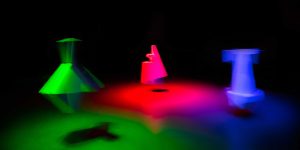
PhD PANEL: slow algorithms and the hazards of standardization
Bauhaus University (DE)
Made up of four doctoral research students from the Bauhaus University Weimar’s practice-based PhD program, this panel uses the 100-year anniversary of the Bauhaus to critically reflect on the cultural, educational, political, and economic standardization of art and design in society today.
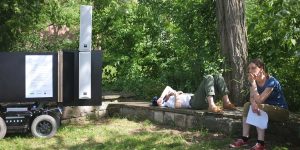
Relations – Experimental Radio Showcase
Bauhaus-Universität Weimar
In addition to the thematic exhibition "Shared Habitats," Bauhaus University, Weimar will present other projects from the departments of Experimental Radio, Media Environments, Human-Computer Interaction, and Product Design.
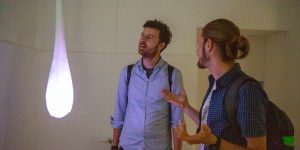
Bubbles and Clouds – Illuminated Interactive Inflatables
Kristian Gohlke (DE), Christian Wiegert (DE)
Interactive pressure-stabilized membrane structures (“Pneus”), suspended from the ceiling, discreetly illuminated from the inside. As visitors pass through the room, through touch and draughts, the objects respond. Attempts to elucidate the objects creates a dialogue of light, sound and movement. In the course of the casual interaction, the visitors become part of a performance. The boundaries between viewer and performer, space and content begin to drift – bubbles wafting in clouds.
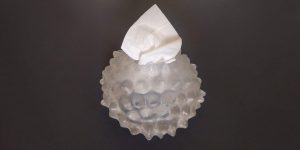
Probing the Planthroposcene: Excerpts from a Dis-service Society
Alexandra Toland (US/DE)
Can “ecosystem services” and disservices provided by plants be seen as phyto-technologies of multi-species societies? How are spaces of creative dissonance, resilience, and resistance created by outliers: pests, parasites, invasive species, and allergens? What moral agency do humans have in determining the assets and liabilities of plants during the environmental strains of the Anthropocene? These questions are explored through an assemblage of objects, images, and recordings featuring plants as protagonists in natural habitats along roadsides, probing what Natasha Myers (2016) has dubbed the “Planthroposcene.”
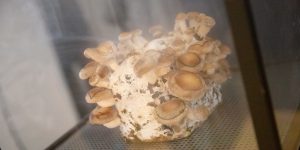
Growing Geometries – tattooing mushrooms
Theresa Schubert (DE)
Growing Geometries – tattooing mushrooms explores the morphology of fungi and evolution of geometrical shapes on living and growing membranes.
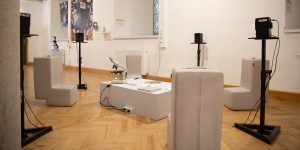
TARDIGRADA – von mikrobiotischen Lebenskünstlern
Maria Antonia Schmidt (DE)
The tardigrade or water bear, a microorganism, survives environmental conditions that hardly any other living creature can withstand. While researchers are working on deciphering the secrets of the tardigrade's survival, the media are throwing themselves at the cute bear and marketing it in all conceivable variations. In the end, the work poses the question of what sound these tiny creatures make. This is reason enough for the world's first tardigrade nano-ear experiment: a musical radio feature/4channel audio installation between science and absurdity.
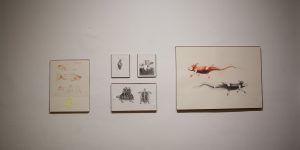
The Poetic Design: From Mimesis to Catharsis.
Homero Ruiz (MX/DE)
The Poetic Design: From Mimesis to Catharsis explores the visual poetry and basis of Greek aesthetic philosophy through its four main elements: Mimesis, Poiesis, Apate (Esthetic Illusion), and Catharsis.


